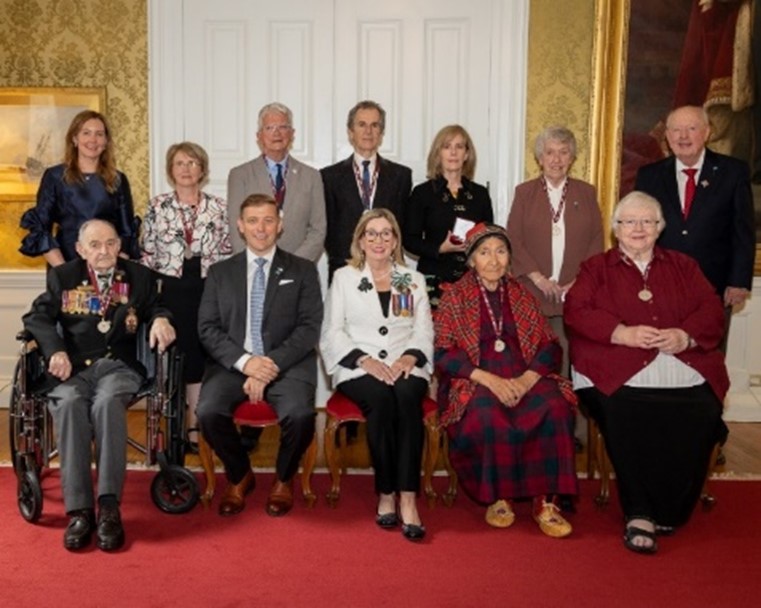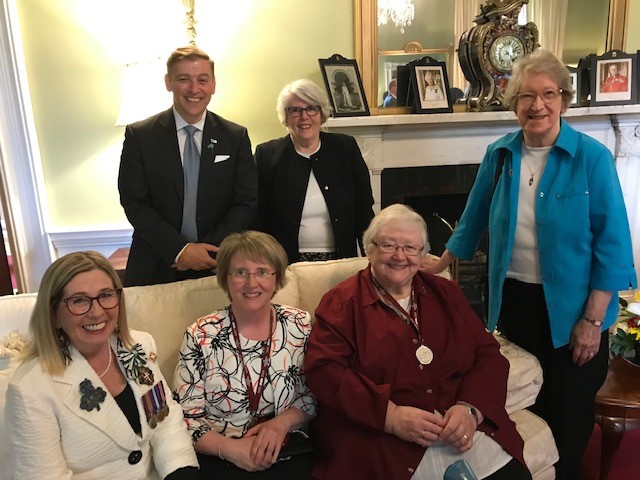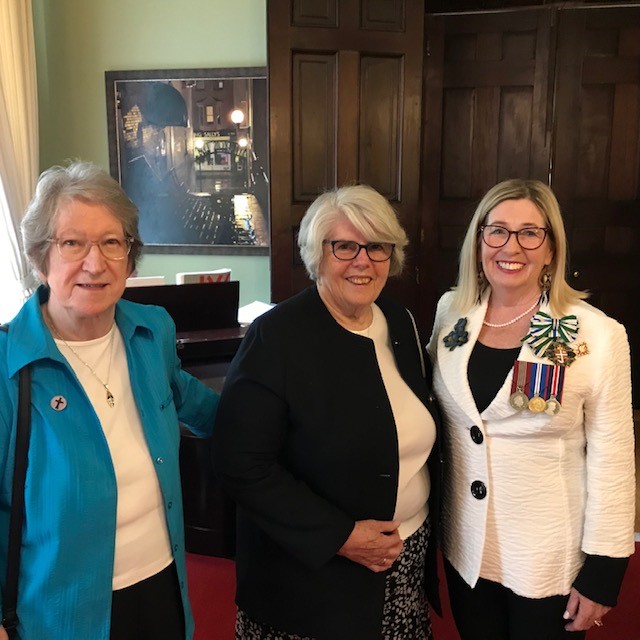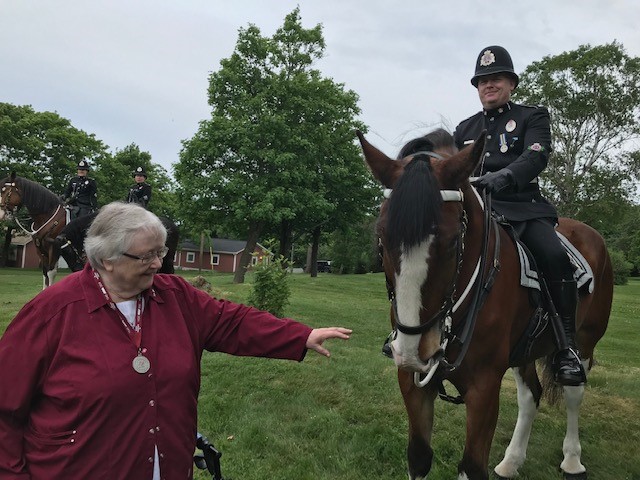World Day Against Trafficking in Persons is a global annual event intended to raise awareness of this serious human rights violation worldwide, to protect the rights of trafficked victims and to encourage governments, organizations and individuals to work towards preventing and combatting trafficking. Sisters of Mercy are among the organisations working to address human trafficking
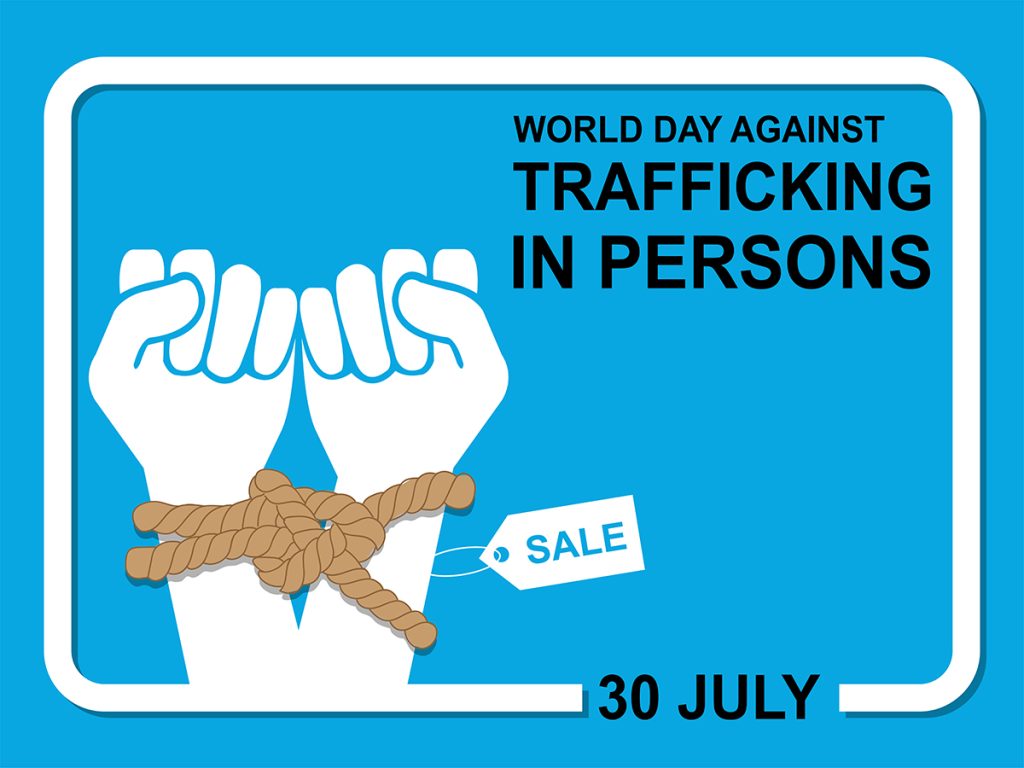 Poverty, migration and gender inequality contribute to social vulnerability which traffickers exploit through force, threats, fraud and false promises of better lives and work opportunities. Consequently, vulnerable persons are bought and sold for financial or self-serving purposes. Over 27 million people around the globe are affected by this tragic situation.
Poverty, migration and gender inequality contribute to social vulnerability which traffickers exploit through force, threats, fraud and false promises of better lives and work opportunities. Consequently, vulnerable persons are bought and sold for financial or self-serving purposes. Over 27 million people around the globe are affected by this tragic situation.
Globally, one in three victims of human trafficking is a child, and the majority of these trafficked children are girls.
According to the Global Report on Trafficking in Persons (GLOTIP) by the UN Office on Drugs and Crime (UNODC), children are twice as likely as adults to face violence during trafficking.
This year, we observe the 10th World Day Against Trafficking in Persons. This year’s campaign focuses on raising awareness of the causes and vulnerabilities associated with child trafficking with the theme “Leave No Child Behind in the Fight Against Human Trafficking”
El Día Mundial contra la Trata de Personas es un acontecimiento mundial que se celebra anualmente con el fin de concienciar sobre esta grave violación de los derechos humanos en todo el mundo, proteger los derechos de las víctimas de la trata y animar a gobiernos, organizaciones y particulares a trabajar para prevenirla y combatirla. Las Hermanas de la Misericordia son una de las organizaciones que trabajan contra la trata de seres humanos
La pobreza, la migración y la desigualdad de género contribuyen a la vulnerabilidad social que los traficantes explotan mediante la fuerza, las amenazas, el fraude y las falsas promesas de mejores vidas y oportunidades laborales. En consecuencia, las personas vulnerables son compradas y vendidas con fines económicos o egoístas. Más de 27 millones de personas en todo el mundo se ven afectadas por esta trágica situación.
En todo el mundo, una de cada tres víctimas de la trata de seres humanos es un niño, y la mayoría de estos menores víctimas de la trata son niñas.
Según el Informe Mundial sobre la Trata de Personas (GLOTIP) de la Oficina de las Naciones Unidas contra la Droga y el Delito (ONUDD), los niños tienen el doble de probabilidades que los adultos de sufrir violencia durante la trata.
Este año se celebra el 10º Día Mundial contra la Trata de Personas. La campaña de este año se centra en concienciar sobre las causas y vulnerabilidades asociadas a la trata de menores con el lema «No dejemos a ningún niño atrás en la lucha contra la trata de personas»
.


 The tradition of the Olympic Truce began in ancient Greece in the ninth century BC through a treaty signed by three Greek city states which were almost constantly at war. The Truce allowed safe participation for all athletes and spectators during the Olympic Games. In our current reality in society, politics and sport, revival of this tradition aims to provide a halt to war and a return to safety for all peoples around the world.
The tradition of the Olympic Truce began in ancient Greece in the ninth century BC through a treaty signed by three Greek city states which were almost constantly at war. The Truce allowed safe participation for all athletes and spectators during the Olympic Games. In our current reality in society, politics and sport, revival of this tradition aims to provide a halt to war and a return to safety for all peoples around the world. Recognizing the situation of many elderly people, the Dicastery for Laity, Family and Life chose as its theme for this year “Do not cast me off in my old age” (Psalm 71:9). Announcing the theme in a press release, the Dicastery noted the loneliness prevalent in the life of many elderly persons who are “so often the victims of the throw-away culture.”
Recognizing the situation of many elderly people, the Dicastery for Laity, Family and Life chose as its theme for this year “Do not cast me off in my old age” (Psalm 71:9). Announcing the theme in a press release, the Dicastery noted the loneliness prevalent in the life of many elderly persons who are “so often the victims of the throw-away culture.”
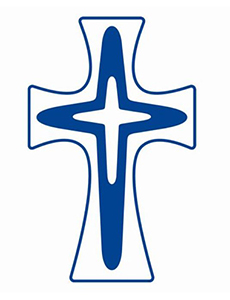 After the completion of her studies at St. Brides, Minnie entered the Sisters of Mercy, and at her reception into the novitiate received the name Sister Mary Benedicta. She was professed on December 27, 1887. During her years at St. Bride’s Sister M. Benedicta’s musical talent was developed under the direction of the highly skilled Sister M. Xaverius Dowsley, and she herself became an accomplished musician. She wrote the music for one of Archbishop Howley’s poems, Dear Old Southside Hills.
After the completion of her studies at St. Brides, Minnie entered the Sisters of Mercy, and at her reception into the novitiate received the name Sister Mary Benedicta. She was professed on December 27, 1887. During her years at St. Bride’s Sister M. Benedicta’s musical talent was developed under the direction of the highly skilled Sister M. Xaverius Dowsley, and she herself became an accomplished musician. She wrote the music for one of Archbishop Howley’s poems, Dear Old Southside Hills.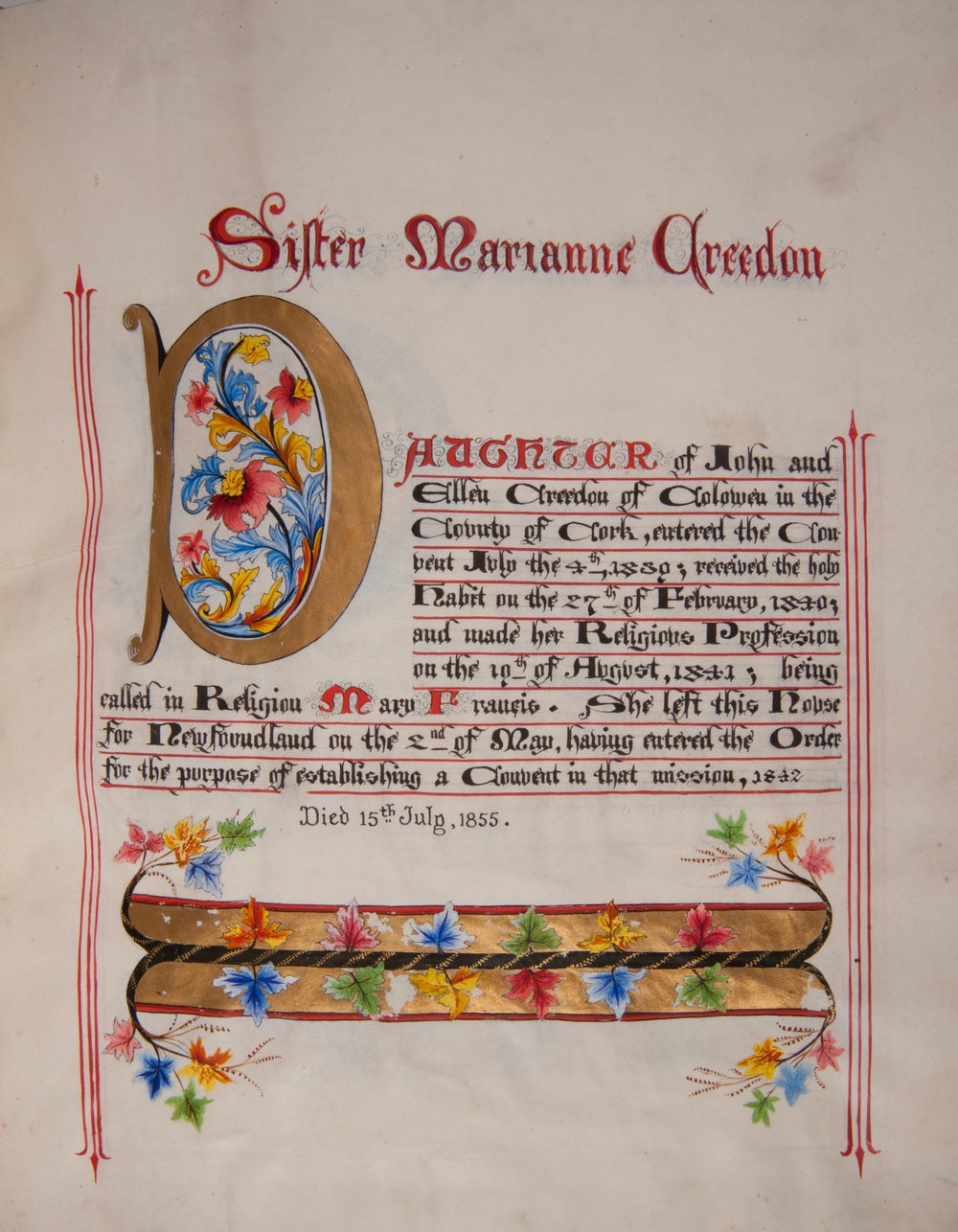 She and her few companions ministered in the school she had opened in 1843 and cared for the sick in their homes and at St. John’s Hospital, even during the most virulent epidemics that occurred so frequently in St. John’s in those days. Just a year before her death she opened Immaculate Conception Orphanage at Mercy Convent to care for children orphaned by these epidemics.
She and her few companions ministered in the school she had opened in 1843 and cared for the sick in their homes and at St. John’s Hospital, even during the most virulent epidemics that occurred so frequently in St. John’s in those days. Just a year before her death she opened Immaculate Conception Orphanage at Mercy Convent to care for children orphaned by these epidemics.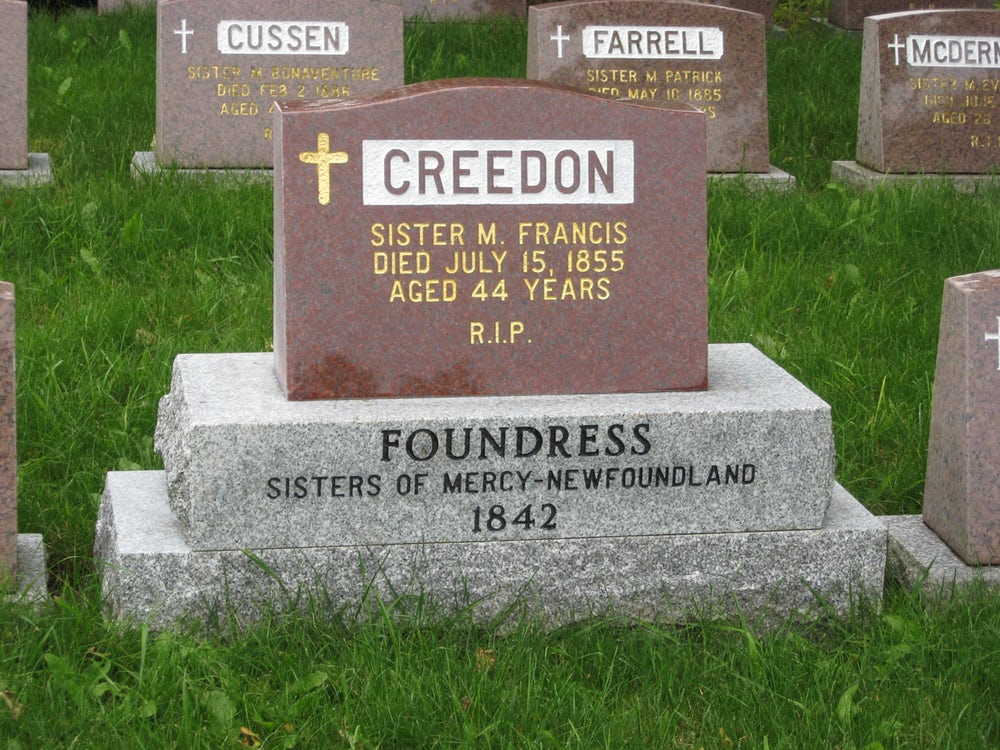 Ella y sus pocas compañeras ejercieron su ministerio en la escuela que había abierto en 1843 y atendieron a los enfermos en sus casas y en el Hospital de San Juan, incluso durante las epidemias más virulentas que se daban con tanta frecuencia en San Juan en aquellos días. Justo un año antes de su muerte abrió el Orfanato de la Inmaculada Concepción en el Convento de la Misericordia para atender a los niños huérfanos a causa de estas epidemias.
Ella y sus pocas compañeras ejercieron su ministerio en la escuela que había abierto en 1843 y atendieron a los enfermos en sus casas y en el Hospital de San Juan, incluso durante las epidemias más virulentas que se daban con tanta frecuencia en San Juan en aquellos días. Justo un año antes de su muerte abrió el Orfanato de la Inmaculada Concepción en el Convento de la Misericordia para atender a los niños huérfanos a causa de estas epidemias.
